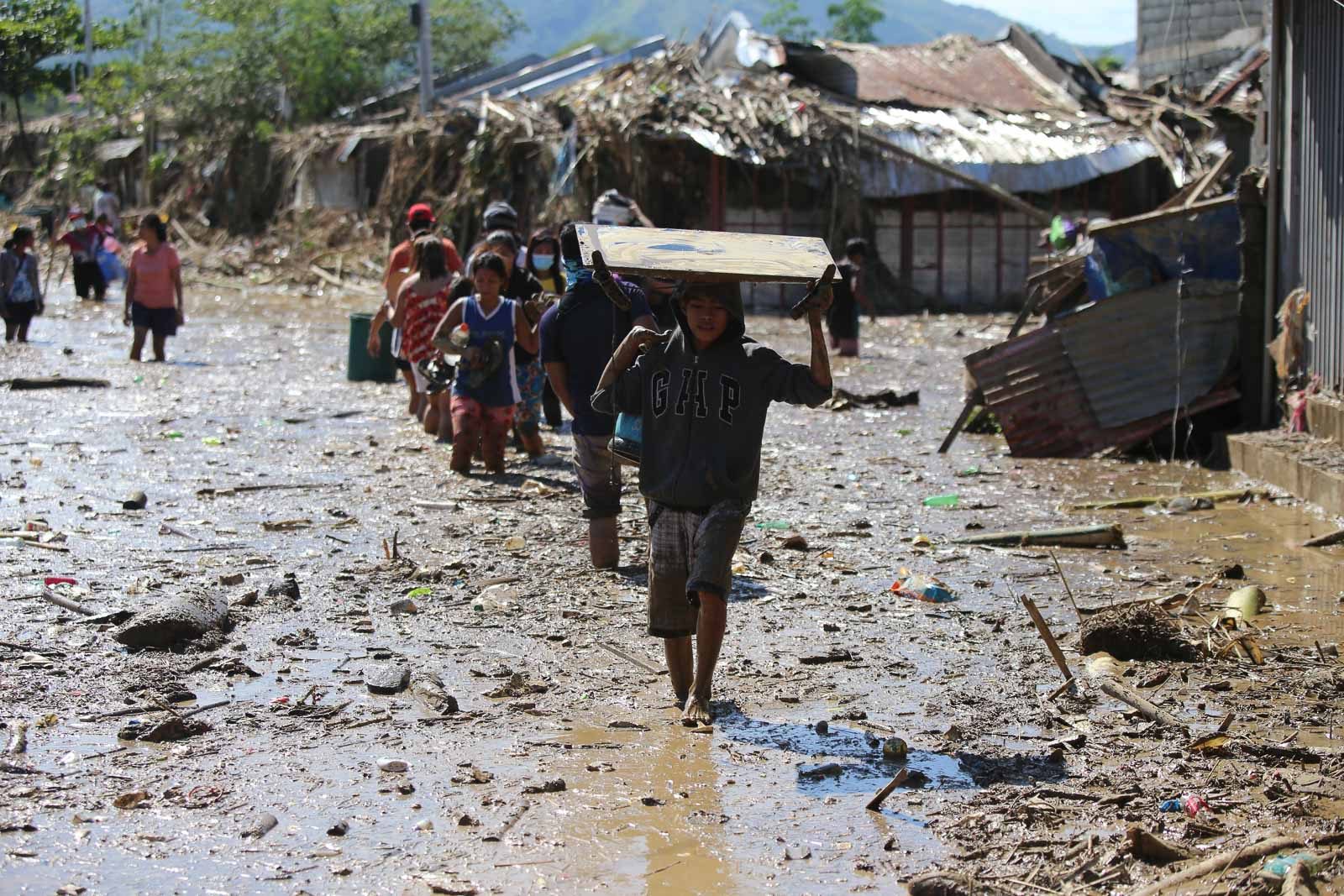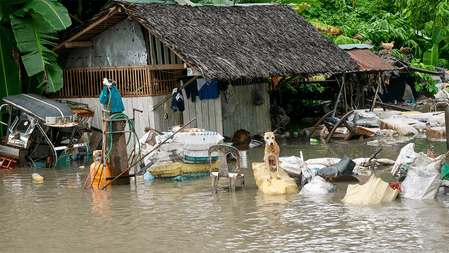SUMMARY
This is AI generated summarization, which may have errors. For context, always refer to the full article.

Humans have spewed so much greenhouse gases into the atmosphere that catastrophic floods, rains, heatwaves, and drought will keep worsening in the Philippines for the next 30 years, no matter what steps we take today to slash emissions.
These were among the findings of a major new report released by a body of scientists convened by the United Nations, the Intergovernmental Panel on Climate Change (IPCC).
Manila Observatory executive director Father Jett Villarin, who has contributed to past IPCC reports himself, said that at the rate the world is going, it is likely that the world will warm by 1.5 degrees Celsius from pre-industrial times.
“What does that mean? That means, actually already even right now, and we’re seeing it – heavy precipitation, heavy rainfall, extreme events are going to be more frequent and I guess more intense,” he said in a Rappler Talk Newsmaker interview on Wednesday, August 11.
Super typhoons like Yolanda (Haiyan) will become more frequent. The back-to-back storms of 2020, Super Typhoon Rolly (Goni) and Typhoon Ulysses (Vamco), are a “preview” of what’s to come in the next few decades at least.
“The category four and five, the strong typhoons, they will be a common feature in a warmer world. Something like a 100-year typhoon will now come once every 50 years or once every 10 years,” said Villarin.
Worse is to come if the world gets 1.5 degrees hotter, something the report said is likely to happen in the 2030s. Hitting this tipping point will bring “extreme events unprecedented in the observational record.”
Sea level rise, drought
The IPCC report also showed that the world is locked in for sea level rise, a finding that should serve as a wake-up call to the Philippines with its many coastal communities, reclamation projects, and land subsidence problems.
“The planet is committed, by that I mean we’re going to see sea levels rise, not just in this century but for centuries to come. We can just slow it down,” said Villarin.
But an even more alarming prognosis for the world, especially for countries like the Philippines with its dependence on agriculture, is worsening drought. Though more intense storms would bring more frequent bursts of heavy rainfall, the country could also experience extreme water shortage in other times of the year, leading to an overall decrease in water.
This spells disaster for water-dependent staple crops like rice but also means the government should implement water-saving policies such as protecting watersheds and conserving water.
While the Duterte administration has backed a Department of Water Resources, bills creating it are yet to hurdle either the House of Representatives or the Senate.
Poor to bear brunt of climate change impacts
A warmer world also means much hotter cities. This is bad news for the urban poor in Metro Manila, a concrete jungle with few green spaces.
“We need to look more closely at the way we plan our urban spaces,” said Villarin, referring to everything from what type of infrastructure to build and where, how to improve drainage systems to withstand more frequent and intense floods, to how to cool down communities stuck in urban-heat islands.
A law to create a national land use plan has been stuck in Congress for over 20 years. It has not been passed by lawmakers despite President Rodrigo Duterte’s persistent calls for it.
All these impacts of climate change will hit poor Filipinos the hardest since those better off can afford to build sturdy houses in safe zones, or buy airconditioning to stave off the heat, or find ways to access nutritious food amid a shortage. (READ: Bleak future feared for Asia’s disaster-prone poor after UN climate report)
Villarin said: “This increasing risk borne by the poor will actually be compounded. You suffer greater risk, which increases your vulnerability, which increases again your risk. It’s like a feedback mechanism, it feeds on itself. We have to break that cycle.” – Rappler.com
Add a comment
How does this make you feel?

There are no comments yet. Add your comment to start the conversation.